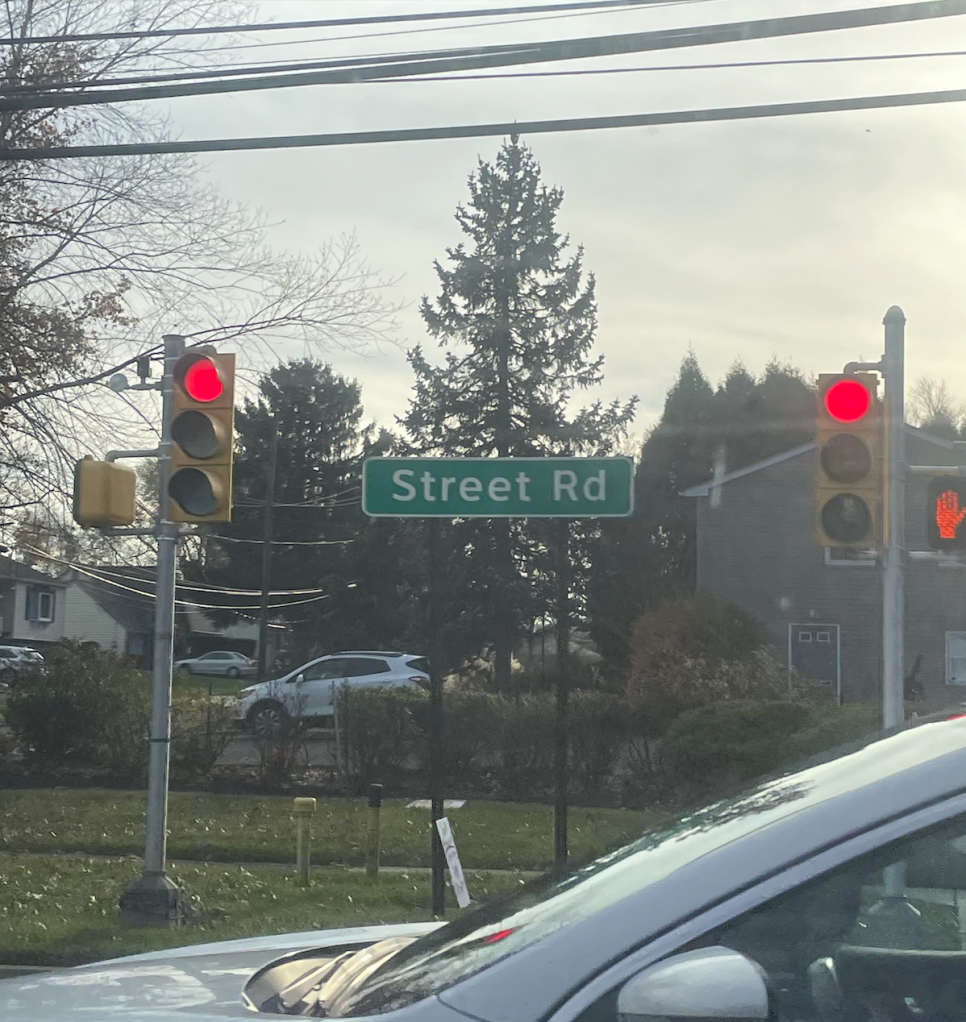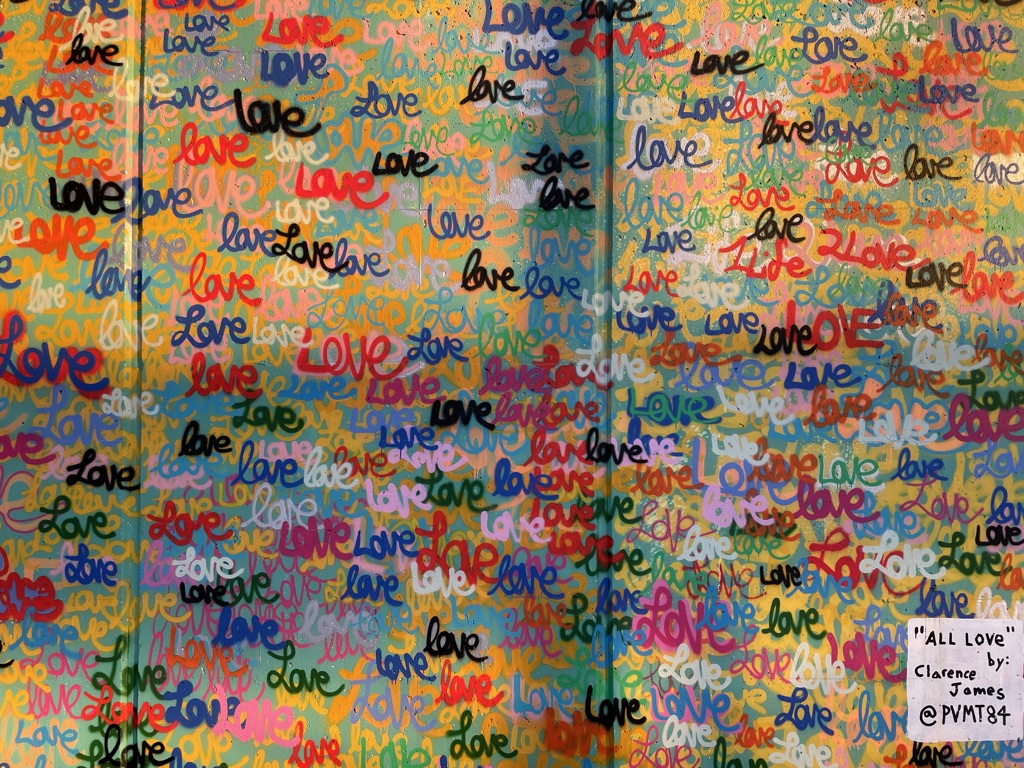
Yesterday I ran into my nemesis (yes I have a nemesis, and like any great nemesis, I’m fairly certain they don’t know they are my nemesis). Coincidentally, I happened to see them when I was examining an unsafe crosswalk with insufficient sightlines in my neighborhood. I recalled (to the extent we can recall anything clearly when we’re thinking about run-ins with our nemeses) a moment a couple of years ago when they had suggested that we ticket cyclers who are not riding in the protected bike lane (I’ll give you one guess as to why they are my nemesis). In my brain, this memory saddled up next to a debate that I’ve seen crop up among transpo nerds, which is whether or not we should even have infrastructure dedicated to different road users. Some argue an ideal street is one where everyone has their own place, like traditional land use planning where there is a zone for retail, a zone for housing, a zone for offices…except in this case there are places where only cars go, where only walkers go, where only cyclers and scooterists go, and so on. However, others argue for taking that mixed-use approach that works so well for our urban cores (quick, think of your favorite city street and count how many uses are scrunched up all together on one block!) and it applying it to our streets where we throw strict road rules about who belongs where out the window. Here’s my take on these intersecting topics.
We create protected bike lanes to help people who want to use bicycles, wheelchairs, scooters, and other personal mobility devices feel – and be – safe. We do this because our streets are dangerous due to cars and the people who drive them. We do not create protected bike lanes to fence off cyclers in the only few feet of road we think they should be confined within. If cyclers want to use any other part of the road, they are (should be seen as) well within their rights to do so; it is, lest we forget, called a public right of way. To be clear, cyclers do not need a reason to justify riding in the street when there is bike infrastructure (protected or not) available. That said, if you did ask they might share it is because they don’t feel safe riding in the protected bike lanes. Perhaps, for instance, their city has not created clear lines of sight around intersections so cyclers feel unseen when attempting to cross a street, especially when vehicles are also permitted to turn into their path. It’s possible a car was parked in the “protected” bike lane and there was not a safe way to re-enter the bike lane in the 3 seconds that you saw them riding. Maybe there is a lot of debris – whether it’s sticks, broken glass, snow and ice, or even thumb tacks people have sprinkled in bike lanes to purposefully derail them – that has not been cleared and causes a serious risk of injury.
This is not the case for cars, and as any regular reader of this blog surely understands by now, it is because cars and bikes are fundamentally distinct mobility tools with vastly different impacts on the world around them. There are certain types of vehicles in certain places and in certain manners that cars should not be driven – such as increasingly and unnecessarily massive vehicles (anywhere, at any speed) and those at speeds higher than 15 miles per hour in places where road users outside of a vehicle are present – because doing so is a threat to public safety and a harm to public health.
“Love is the desire for the separated to become whole”
– An interpretation of Paul Tillich by way of Priya Parker
In an ideal world, we would not have to separate modes. In fact, Dutch traffic engineer Hans Monderman proposed a design philosophy that I quite admire of so-called shared space where common “safety” measures like signals, signs, and markings are removed, leaving us to navigate a built environment by making eye contact with others, proceeding cautiously, and generally using our literal street smarts when negotiating movement with others. I forgot where I read this, but apparently Hans used to demonstrate the power of such a built environment wherein he blindfolded himself, walked into the middle of what I’ll call a naked (given its absence of the usual adornments of bright yellow signs with their specific instructions) street, and just wandered around knowing that he would not be struck by a car.
In such a world, we would all be able to use whatever mode of transportation we want without putting ourselves – or others – at risk of injury or death. (For what it’s worth, if I were to create a hierarchy of how to design streets, the first option would be car-free zones. The second option would be car-slow zones. And the third option would be car-control zones where we separate cars from all other road users.) However, because many layers of opposition have made it such that drivers are able to operate their unsafe cars in a reckless manner in places (i.e., compact areas with other people) that are inherently at odds with what cars were built to do (i.e., go fast for long distances), we are left with no choice but to create separate spaces for people who are not protected by metal boxes to travel.
We can and should advocate for a future where all modes can peacefully co-exist. In my humble opinion, and echoing the sentiments of Paul Tillich, we will not have cities rooted in love until and unless we are able to remove the physical things that separate us due to the figurative things that divide us. Unfortunately, we can’t wait for that transformation to happen given the scale and scope of change needed, so right now we have to train our focus on making safe infrastructure…whatever that requires. We must hope that as we do so, driving behaviors and cultural mindsets shift such that we can call all streets without any separate infrastructure safe. In the meantime, I’ll revel in the fact that every newly installed protected bike lane is another reduction in the space dedicated to the storage and speed of cars and is thus another chip away at car supremacy.
That’s it for now. Until next time, I invite you to get curious – what comes to mind when you imagine a peaceful transportation system? ✌️🚸

Leave a comment